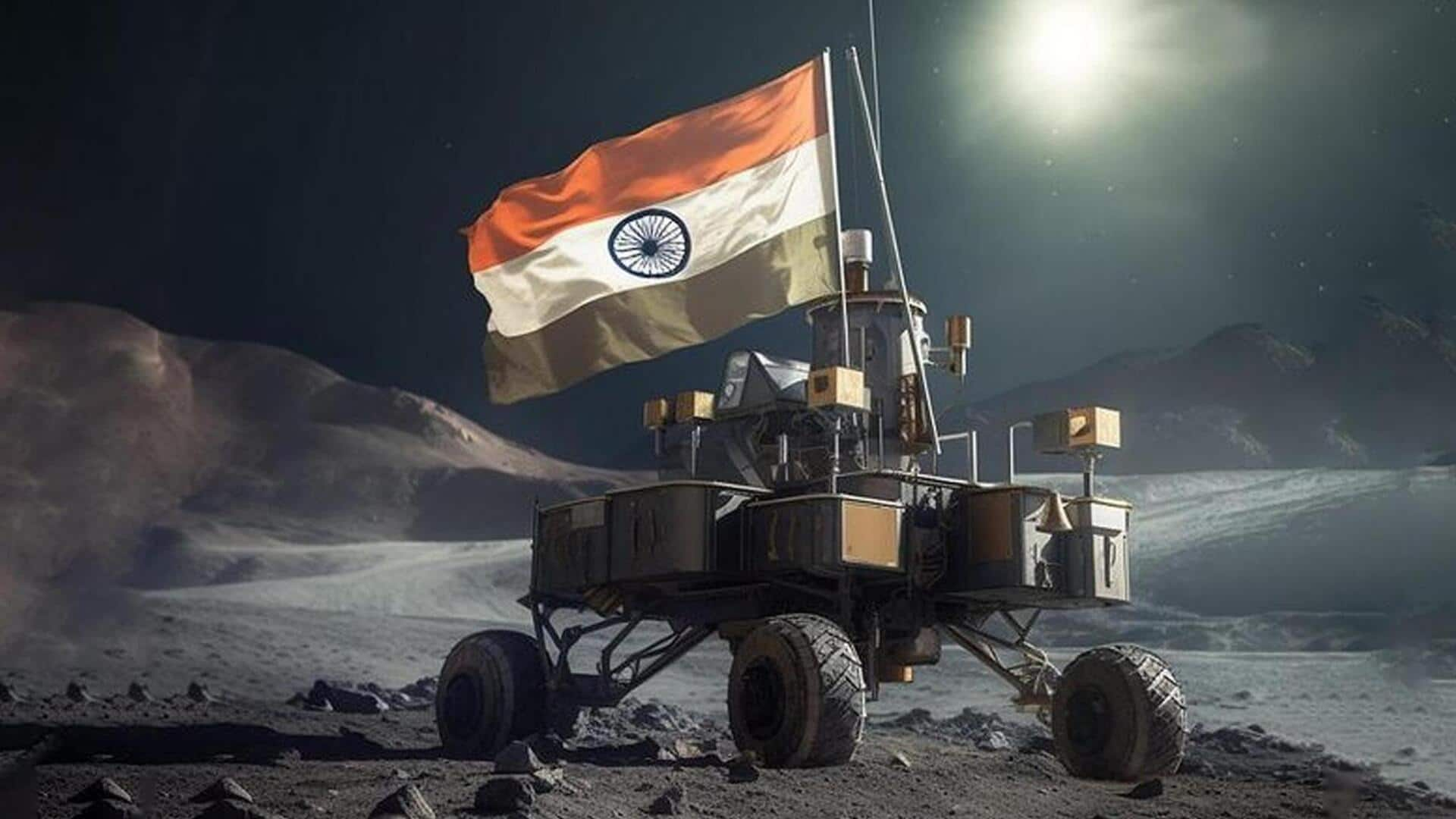
ISRO's new video shows Pragyan rover maneuvering on Moon
What's the story
Chandrayaan-3 mission, which made India the first-ever nation to have a presence near the Moon's south pole, is making significant progress.
Indian Space Research Organisation (ISRO) has now shared a video of the Pragyan rover rotating in search of a safe route on the lunar surface. The short clip was captured by the cameras onboard the Vikram lander.
"It feels as though a child is playfully frolicking in the yards of Chandamama, while the mother watches affectionately," said ISRO.
Twitter Post
Take a look at the video
Chandrayaan-3 Mission:
— ISRO (@isro) August 31, 2023
The rover was rotated in search of a safe route. The rotation was captured by a Lander Imager Camera.
It feels as though a child is playfully frolicking in the yards of Chandamama, while the mother watches affectionately.
Isn't it?🙂 pic.twitter.com/w5FwFZzDMp
Details
The rover has spent a week on Moon
The Pragyan rover and Vikram lander touched down on the lunar south pole on August 23 and will remain there for one lunar day, equivalent to 14 Earth days.
The rover has already spent a week on the Moon. At present, both the rover and lander are racing to complete experiments before the lunar night sets in next week. After that, it will be difficult for the cameras to capture anything.
What Next?
Rover has uncovered several elements in lunar soil
The Laser-Induced Breakdown Spectroscope (LIBS) instrument onboard the Chandrayaan-3 rover has made the first-ever in-situ measurements of the elemental composition of the lunar surface near the south pole.
The Pragyan rover has detected the presence of sulfur, aluminum, calcium, iron, chromium, titanium, manganese, silicon, and oxygen.
The Alpha Particle X-ray Spectroscope (APXS) instrument, which aids in the analysis of the elemental composition of soil and rocks on planetary surfaces with little atmosphere, has also detected sulfur and other minor elements.
Insights
ISRO is now preparing for Aditya-L1 launch
India's next major space mission, Aditya-L1, is set to launch on Saturday (September 2) at 11:50am. The mission will monitor solar activities and their effects on space weather in real-time.
The Aditya-L1 mission will launch atop a PSLV (Polar Satellite Launch Vehicle) XL rocket from Satish Dhawan Space Centre in Sriharikota. The solar observatory will reach its target location—Lagrange point 1 (L1) of the Sun-Earth system—in about four months.